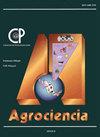高原半干旱灌丛草地立地与条件的传统与新评价
IF 0.5
4区 农林科学
Q4 AGRICULTURE, MULTIDISCIPLINARY
引用次数: 0
摘要
在墨西哥,牧场场地和条件的概念并不为人所熟知。因此,圣路易斯Potosí和萨卡特卡斯高原上的大多数私人牧场正在经历严重的普遍退化过程。本研究的目的是调查和描述圣路易斯Potosí-Zacatecas高原上三个肉牛牧场的多分支牧场遗址,并利用定量生态学方法和最新的技术工具对其状况进行评估。提出的假设是,在圣路易斯Potosí-Zacatecas高原这类生产单元的多分支牧场中,用定量生态学方法(用于草地和土壤)评估的牧场位置和条件也可以通过更新的技术加以确定。基于Landsat卫星图像,对三个牧场进行了无监督分类,然后通过实地观测进行了确认。总共调查了11个地点,每个牧场3个(微植沙漠灌丛,主要是布蒂卢瓦;微植荒漠灌丛,具空孢子菌优势;以及介于微植荒漠灌丛和嗜蔷薇荒漠灌丛之间的过渡带)和两个专属区域(以紫花菊为主的石竹灌丛和嗜蔷薇荒漠灌丛)。通过测量主要植物物种的密度和体积(体积生物量)来评价草地状况,并根据牧草价值进行分类,并根据裸露土壤和植被、凋落物、粪便和岩石覆盖来评价土壤表面的实际状况。使用PC-ORD程序中的DECORANA和TWINSPAN模块对数据进行排序和分类。该方法对圣路易斯Potosí-Zacatecas高原上三个私人牧场的牧场状况进行了满意的场地和条件评价。本文章由计算机程序翻译,如有差异,请以英文原文为准。
TRADITIONAL AND UPDATED EVALUATION OF THE RANGELAND SITE AND CONDITION IN THE SEMIARID SCRUB OF THE HIGH PLATEAU
In Mexico, the concepts of rangeland site and condition are not well known. For this reason, most of the rangelands of private ranches on the high plateau of San Luis Potosí and Zacatecas are undergoing a process of severe generalized deterioration. The purpose of this study was to survey and characterize multi-branched rangeland sites of three beef cattle ranches on the San Luis Potosí-Zacatecas High Plateau, as well as to assess their condition using a quantitative ecological method complemented by updated technological tools. The hypothesis proposed was that the site and condition of rangeland evaluated with the quantitative ecological method (used for grasslands and soil), complemented by updated technology, are also identifiable in multi-branched rangelands of this type of production units on the San Luis Potosí-Zacatecas High Plateau. Based on a Landsat satellite image, an unsupervised classification process was performed for the three ranches, which was then confirmed by field observations. A total of 11 sites were surveyed, three on each ranch (microphyll desert scrub, predominantly Bouteloua gracilis; microphyll desert scrub, with predominance of Sporobolus airoides; and an ecotone between microphyll desert scrub and rosetophile desert scrub) and two exclusive locations (crassicaule scrub and rosetophile desert scrub with predominance of Muhlenbergia villiflora). Rangeland condition was evaluated by measuring density and volume (volumetric biomass) of the main plant species, categorized by forage value, and the actual state of the soil surface was assessed in terms of bare soil and vegetation, litter, feces and rock cover. The data were ordered and classified with the DECORANA and TWINSPAN modules from the PC-ORD program. Site and condition evaluation under this approach was satisfactory for surveying the state of the rangelands of the three private cattle ranches studied on the San Luis Potosí-Zacatecas High Plateau.
求助全文
通过发布文献求助,成功后即可免费获取论文全文。
去求助
来源期刊

Agrociencia
农林科学-农业综合
CiteScore
0.50
自引率
33.30%
发文量
51
审稿时长
18-36 weeks
期刊介绍:
AGROCIENCIA is a scientific journal created and sponsored by the Colegio de Postgraduados. Its main objective is the publication and diffusion of agricultural, animal and forestry sciences research results from mexican and foreign scientists. All contributions are peer reviewed. Starting in the year 2000, AGROCIENCIA became a bimonthly and fully bilingual journal (Spanish and English versions in the same issue). Since 2007 appears every month and a half (eight issues per year). In addition to the printed issues, the full content is available in electronic format.
 求助内容:
求助内容: 应助结果提醒方式:
应助结果提醒方式:


